ABOUT THE AUTHOR
W. Michael Farmer combines ten plus years of research into nineteenth-century Apache history and culture with Southwest living experience to fill his stories with a genuine sense of time and place. He is a retired PhD physicist whose scientific research has included measurement of atmospheric aerosols with laser-based instruments, and he has published a two-volume reference book on atmospheric effects on remote sensing. He has also written short stories for anthologies and award-winning essays. His first novel, Hombrecitos War , won a Western Writers of America Spur Finalist Award for Best First Novel in 2006 and was a New Mexico Book Award Finalist for Historical Fiction in 2007. His other novels include Hombrecitos Search ; Tiger, Tiger, Burning Bright: The Betrayals of Pancho Villa ; and Conspiracy: The Trial of Oliver Lee and James Gililland . His Killer of Witches: The Life and Times of Yellow Boy, Mescalero Apache, Book 1 won a Will Rogers Medallion Award and was a New MexicoArizona Book Awards Finalist in 2016. Marianas Knight: The Revenge of Henry Fountain won the 2017 New MexicoArizona Book Award for Historical Fiction, and Blood of the Devil: The Life and Times of Yellow Boy, Mescalero Apache, Book 2 was a finalist. These two novels have also won 2018 Will Rogers Awards. Apacheria: True Stories of Apache Culture, 18601920 won the 2018 New MexicoArizona Book Awards for HistoryOther (other than New Mexico or Arizona) and for Best 2018 New Mexico Book.

A TWODOT BOOK
An imprint and registered trademark of The Rowman & Littlefield Publishing Group, Inc.
4501 Forbes Blvd., Ste. 200
Lanham, MD 20706
www.rowman.com
Distributed by NATIONAL BOOK NETWORK
Copyright 2019 W. Michael Farmer
All rights reserved. No part of this book may be reproduced in any form or by any electronic or mechanical means, including information storage and retrieval systems, without written permission from the publisher, except by a reviewer who may quote passages in a review.
British Library Cataloguing in Publication Information available
Library of Congress Cataloging-in-Publication Data available
ISBN 978-1-4930-4200-5 (hardcover)
ISBN 978-1-4930-4201-2 (e-book)
 The paper used in this publication meets the minimum requirements of American National Standard for Information SciencesPermanence of Paper for Printed Library Materials, ANSI/NISO Z39.48-1992.
The paper used in this publication meets the minimum requirements of American National Standard for Information SciencesPermanence of Paper for Printed Library Materials, ANSI/NISO Z39.48-1992.
Printed in the United States of America
For Corky, my best friend and wife
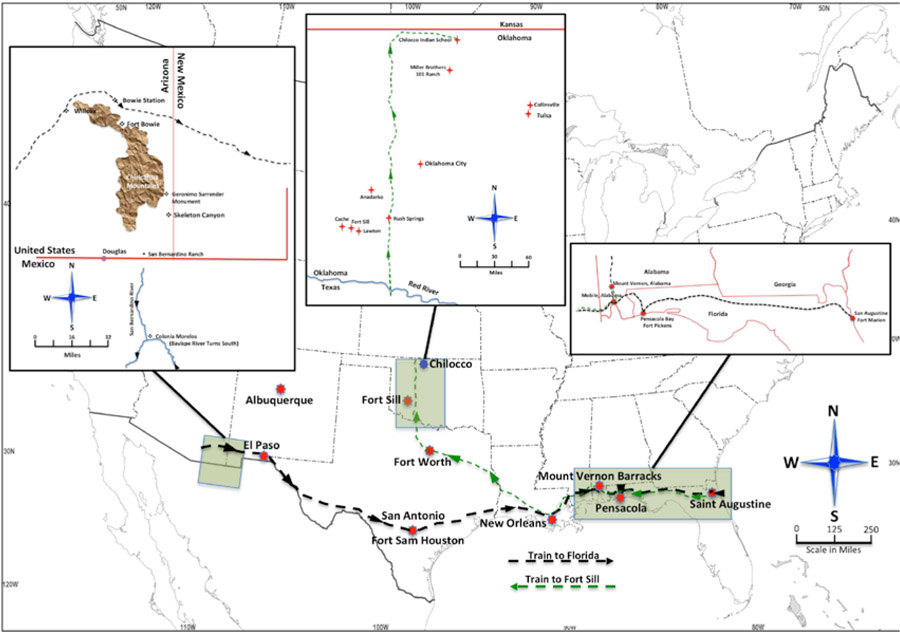
The odyssey of the Naiche-Geronimo band of Apaches from their surrender at Skeleton Canyon and train departure from Bowie Station in September 1886, six-week stop in San Antonio, and separation for the men to live at Fort Pickens and their families to live at Fort Marion until they were reunited in April 1887, while the rest of the Chiricahuas moved to Mount Vernon Barracks, Alabama. The Naiche-Geronimo band was also moved to Mount Vernon in May 1888 and lived at Mount Vernon for six years until finally all the Chiricahuas departed from Mount Vernon Barracks to Fort Sill, Oklahoma, in October 1894. W. MICHAEL FARMER
ACKNOWLEDGMENTS
I AM INDEBTED TO THE SUPPORT OF NUMEROUS DIVERSE CONTRIBUTORS to this work who range from archival librarians, to editors, to numerous historians whose traceable records have made this work possible, to friends who have opened their homes to me for work in the Southwest, all of whom deserve special mention. The patience, encouragement, and support of my wife, Carolyn, made this work possible. Erin Turners support at TwoDot made this book possible, and her editorial judgments and suggestions have been impeccable. Melissa Starr helped with the textual edit. Lynda Snchez has shared rare photographs from her collection developed over years of research with Eve Ball, and she has been a guiding light in understanding the Apache people. Most of the photographs in this work are from the National Archives and Library of Congress. Their work has given the public access to historical images that would not have been possible even twenty years ago. Meredith McDonough at the Alabama Department of Archives and History was helpful in securing a hard-to-find photograph.
Histories I found particularly helpful include those by Angie Debo; Robert Utley; Eve Ball, Nora Henn, and Lynda Snchez; Alicia Delgadillo and Miriam Perrett; Lynda Snchez; Sherry Robinson; Woodward B. Skinner; Edwin Sweeney; Henrietta Stockel; and John Turcheneske.
I especially owe a note of thanks to Pat and Mike Alexander in Las Cruces, New Mexico, who opened their home to me while I rambled through the surrounding countryside doing research, giving lectures, and signing books.
To the many readers of the original drafts of these essays, I owe my sincere appreciation for their support and comments.
PREFACE
AMONG THE FIERCEST AND DEADLIEST INDIANS FACED BY AMERICANS settlers in the last quarter of the nineteenth century were the Apaches, who killed nearly all they came across, destroyed property, and stole livestock and supplies for a living while trying to protect land they claimed as their territory. The great war leaders of the Apaches at that time included Mangas Coloradas, Cochise, Victorio, Nana, Juh, Chihuahua, and Loco, but at the final surrender, none were as well known or as feared by Mexicans and Americans alike as Geronimo. The Geronimo legend is a major thread in the tapestry of the American West. Yet the true story of Geronimo, an epic comparable to the great stories of the ancients such as The Iliad and The Odyssey of Homer, stands above the half-truths and distortions sleeping in book and movie myths.
Geronimo was not a chief, but a di-yen , a medicine man with supernatural power. In his wild and free days, Geronimo was a hard man, a killer with a merciless eye who destroyed any supposed enemy who crossed his path when he was at war. He drew pleasure from satisfying an unending thirst for revenge, killing all the Mexicans he could of any age or gender.
The true measure of a man comes not when he is in power but in how he handles himself when the boot of misfortune is pressed solidly against his neck to choke him. Geronimo surrendered for treaty terms that included promises that all memory of the bad things he and his followers had done would be wiped out (much of what they did was never forgotten), all the Chiricahua bands would be together and receive their own reservation with good water and grass for raising cattle (never happened), Geronimos warriors would see their families within five days after their surrender (actually they waited at least seven months), and they would remain in exile in the East for about two years (the Chiricahuas were prisoners of war for twenty-seven years). Thus it was that Geronimo and the Chiricahuas became prisoners of lies. Geronimo was a prisoner of war for the last twenty-three years of his life, but he survived and prospered despite years that included many sorrows and trials.
This book contains true stories about Geronimo and the Chiricahuas during their years as prisoners of war. It is a collection of short essays and associated photographs or art designed to sketch Geronimo as the man he was in the time and society in which he liveda complex individual filled with life and all its contradictionsforced to adapt to a society he had long disliked and didnt understand, whose members, he believed, had told many lies to acquire his surrender. All the essays are based on historical events published by creditable and respected historians using material recorded in memoirs, military records, newspaper accounts, reports to Congress, and oral stories told by event participants and astute observers.


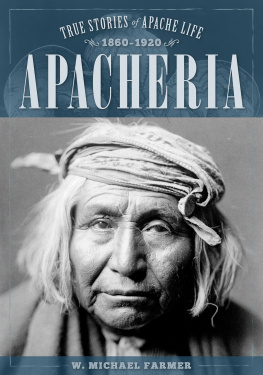
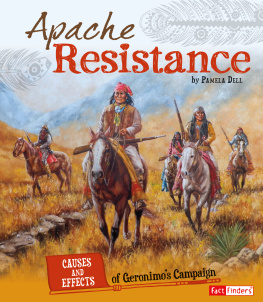

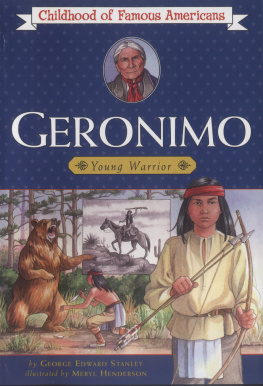

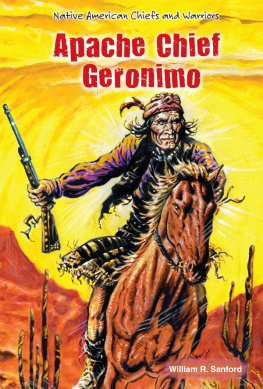

 The paper used in this publication meets the minimum requirements of American National Standard for Information SciencesPermanence of Paper for Printed Library Materials, ANSI/NISO Z39.48-1992.
The paper used in this publication meets the minimum requirements of American National Standard for Information SciencesPermanence of Paper for Printed Library Materials, ANSI/NISO Z39.48-1992.